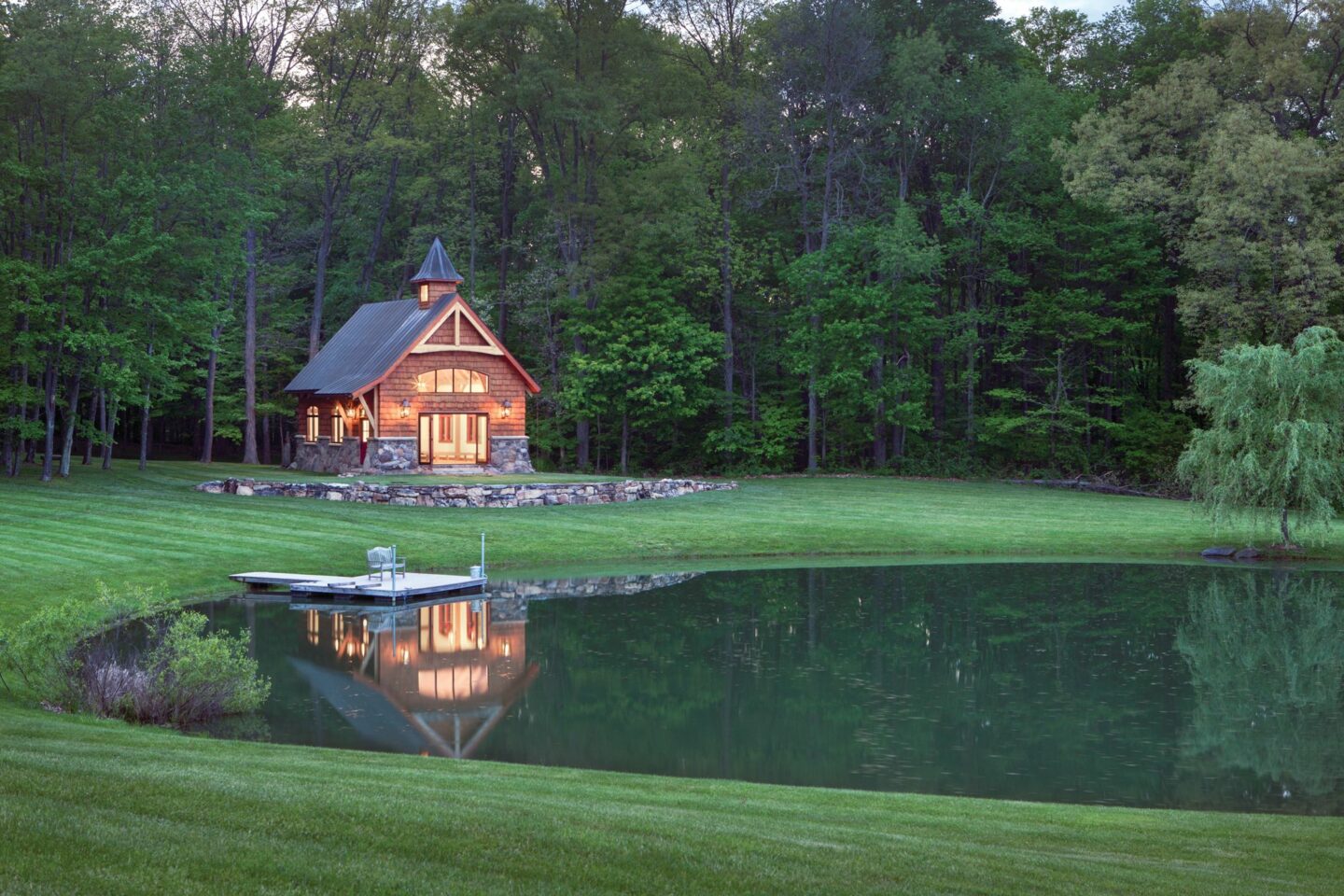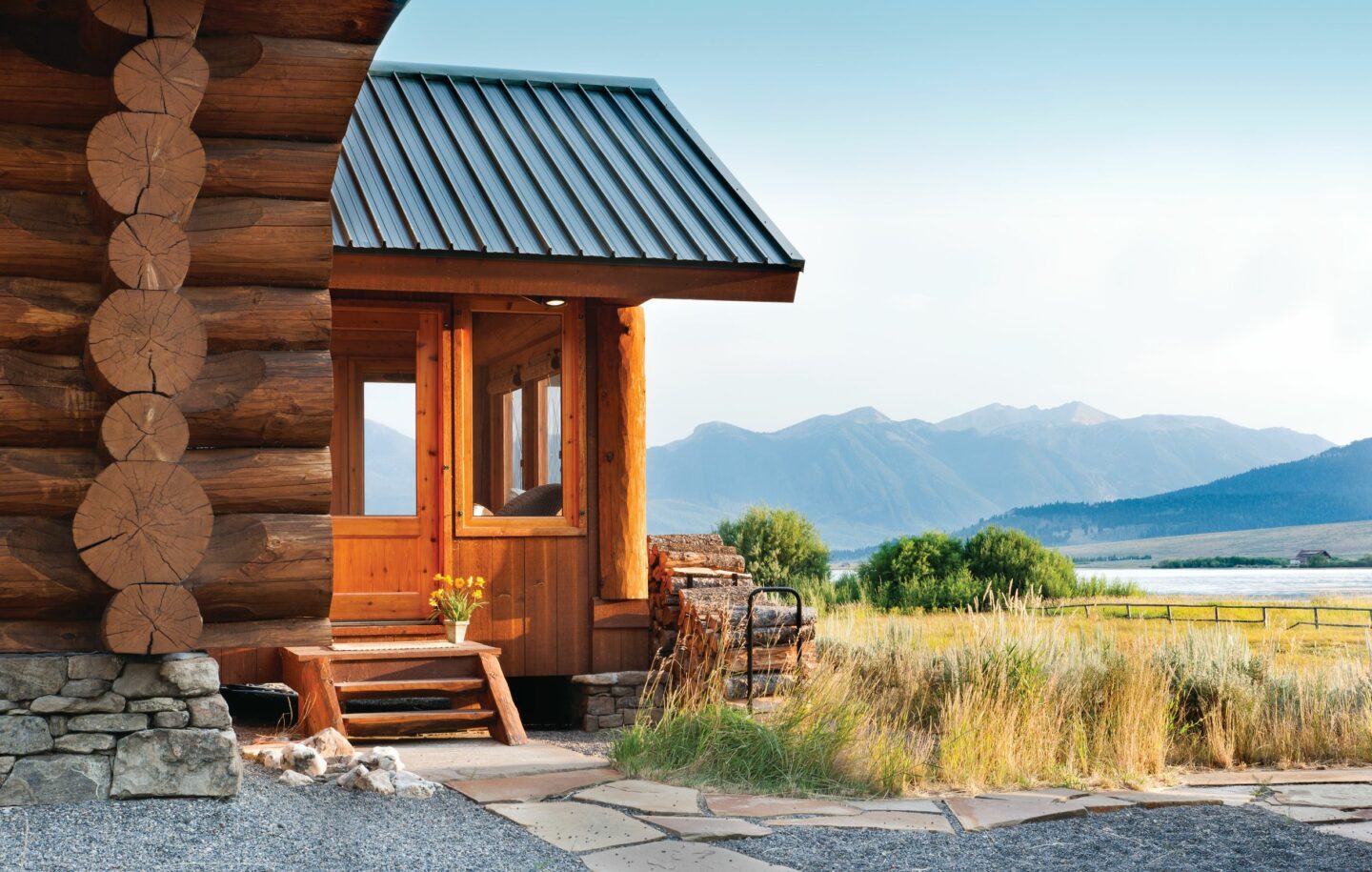Choosing the right building site makes all the difference in constructing a log & timber home.
The adventure of building a log or timber home begins with an idea. Then comes the challenge of making the dream a reality, and the list of items to be completed is long.
Among the first and most critical elements in the journey is the selection of a building site. The characteristics of the land are the keys to the building process and to the long-term enjoyment of one of life’s greatest investments. Consider the fact that the topography of the site—rolling, flat, or sloped—will influence the size and positioning of the home. Then, take into account those vistas that are offered. Views of mountains, near or distant, a body of water, or a ski slope, should be assessed.
Then, there are the nuts and bolts of the site, the marriage of the home to the land. These include whether the property is improved with utilities, water, and year-round access or if these will need to be figured into the cost of the overall project. There may be some grading involved in order to situate the foundation properly, and the homeowner can bet that the moving of dirt is not cheap, soaking up money that could be put to good use elsewhere. The less bulldozing needed, the better!

“It is advisable to make the selection of a building site in conjunction with the selection of your house plan,” notes Ron Silliboy of Ward Cedar Log Homes in Houlton, Maine. “It is much easier to choose a home that fits your land than to try to adjust the land by means of expensive grading and excavation to fit a house plan. You also want to consider any local ordinances that may obstruct your view later. Checking with the local building department will provide an answer to this question, and then consider the readiness of the lot for building. Is the lot unimproved? To make it ready, water and sewer or septic tank have to be in place, as well as a roadway and connections to gas and electrical power sources. Examine all potential sites for drainage and water retention. You want to situate your log home on the highest spot so rain water will drain away.”
Of course, the owner’s vision of the finished project goes hand-in-hand with the selection of a building site. Personal preferences, wants versus needs, vary widely depending on exactly what is to be achieved. Is the home a permanent residence or a weekend retreat? Is this the home you’ll spend your retirement years in? Does it make sense to invest more in the land than in the cost of the home itself? Maybe.
“Where are you in life, and what are you looking for?” asks Robert Lockerby of Summit Log & Timber Homes in Parksville, British Columbia. “Build in an area that you enjoy. A retired couple may want a quiet community with emergency services nearby. A skier may want to be close to a ski resort, and the closer to a resort you build the more expensive the site will be.
“The big thing is to have an honest conversation with yourself and ask what the ultimate goal is,” continues Lockerby. “What are you trying to achieve? What are your financial tolerances? What can you afford to spend, and what do you want to spend? Some people want to be in Jackson, Wyoming, and property there can be half a million to $1.5 million. Then, it can cost $600 to $1,000 a square foot to build. In McCall, Idaho, you can find a site for $250,000 and build for $300 a square foot. But you don’t have the Tetons there! There are so many considerations. Sometimes it is about name recognition, and the cost of living will be higher.”
Lockerby also warns prospective homeowners to make sure their lot is actually buildable, checking on bedrock and soil percolation if a septic tank is required. He says orienting the home to take advantage of the available views is critical and cautions those using handcrafted logs to determine whether a truck with a 48-foot flatbed trailer can actually reach the site, deliver its load, and get out without turning around.
All the while, bear in mind the cost associated with bringing the land up to buildable condition. “Buying land in an improved subdivision will probably mean more cost up front,” he adds, “but the infrastructure is already in and things have been planned for. These lots are often developed around golf courses or rivers and lakes and may have a community building.”
The best way to approach site selection is with a checklist so that basic questions can be answered quickly and the details may be decided before it is too late to change course. Silliboy asserts that location is the primary consideration. It can cause properties to increase or decrease in value.
“You can build the right house in the wrong location,” he explains. “You can remodel your log home or alter the layout, but you cannot move it unless you are willing to pay a large expense. A southern exposure on the length of the home is energy efficient. Heating bills in a sun-warmed home can be substantially smaller in winter. In warmer climates a northern exposure is decidedly preferable.”
Avoiding the pitfalls and problems that can surface during the building process will save time and money. “Some of the mistakes we have seen include people not stepping foot on the property before they buy,” relates Silliboy. “You want to see the property so you can spot any issues with the land. The term ‘buildable’ doesn’t mean the same thing everywhere. In some areas it means a city or county permits you to build on the land. In other areas it can simply mean that the land itself is good to build on. Be sure to get all the information you need. Another common mistake involves skipping necessities like title searches, soil tests, appraisals, and land surveys. It is always good to work with professionals so you don’t forget these things. Make sure you aren’t stuck with property that is a disaster waiting to happen.”
Finding the perfect place to build a log or timber home takes time and effort. Research and self-education make the path to the front door easier, and one of the earliest considerations is the piece of ground where the dream begins to take shape.

